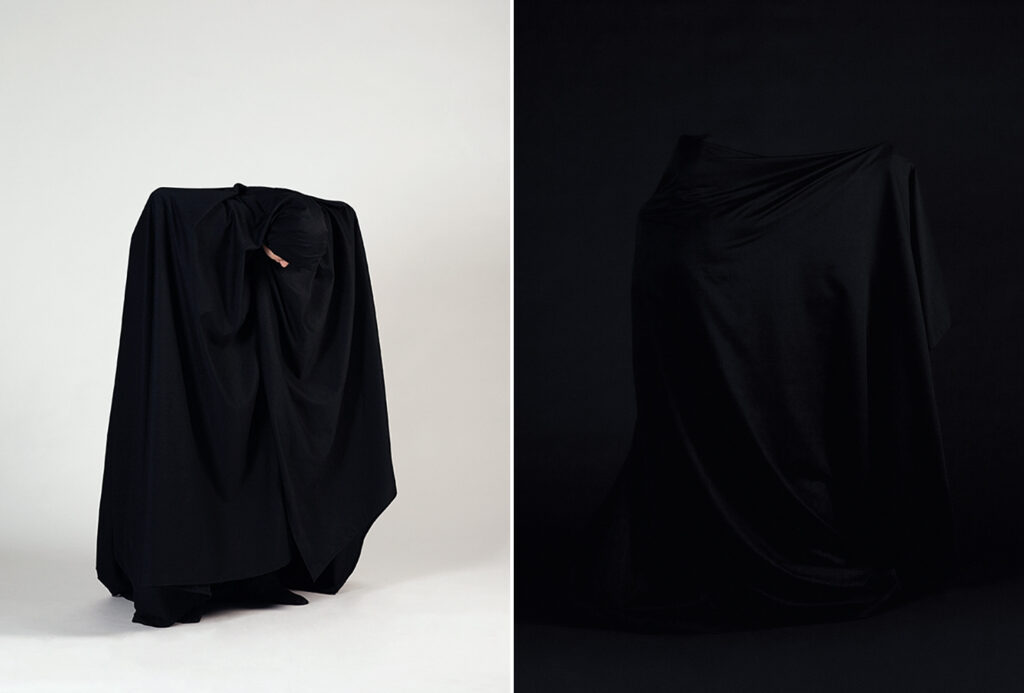
Tanja Murasvkaja (1978) works with photo, video, and installation, focusing mainly on questions of identity in Estonian society, influenced by historic processes and global developments.
Muravskaja is well known for her series of portraits, one of the earliest of which, “Positions” (2007), juxtaposes young Estonian artists with young Estonian Neo-Nazis – the first group wearing nothing but the Estonian flag covering their bodies, the second standing to attention next to the national flag. The series of portraits, “They, who sang together” (2008), and the exhibition of the same title, depicts politicians and key figures of the Singing Revolution and the Popular Front of Estonia. The close-ups show, on the one hand, how people have aged, but also raises the question of what has become of the new republic of Estonia that had its beginnings in the Singing Revolution of the 1980s. Muravskaja continues with a closely related theme in “Lucky Losers” (2009), presenting video portraits of real, imaginary, and potential local Russian leaders on a black background.
The portrait series “Estonian race” (2010) shows young men, although without a hint to their names or social background. With this the artist speculates on the identity of “a typical Estonian” and asks if a “race” of such kind actually exists. She continues exploring nationality and race in the series “Our Own” (2017), that depicts NATO soldiers sent to serve in Estonia. The series focused on national security, the impact of political conflicts on the sense of self, and the creation of contemporary identities in the changing geopolitical reality.
In the two-channel video work “Three sisters” (2015), Muravskaja interviewed her cousins who live in two different information spaces after the political and military conflict flared up in Ukraine. The video shows ideological differences between close relatives, and its permeation in the private sphere, fuelling conflict. “Three sisters” centres on a question of ethics: how to refrain from offending your family, making enemies of your sisters, insulting viewers’ convictions, how to stay true to oneself and stand your ground.
The 2007 “Self-Portrait. Positions” (Tartu Art Museum), created in the colours of the Estonian flag, was later developed into a diptych. “Untitled/ Self-portrait” (2015) depicts the artist dressed in black on a white background. The Estonian-Ukrainian artist Muravskaja is not a Muslim, but as a woman is able to wear the garment, referring to patriarchy and otherness. This is how a new political subject is born – with plurality as the new normal.
The 2018 installation “2036” (2018) created for the Köler Prize exhibition, focuses on the controversy of the current and future military, based on the political state of mainstream media, in the exhibition space and its history. It was the same space where, according to the 1972 floor plan of the building, the so-called soviet red corner was located; so the artist staged an abandoned classroom, where members of the youth organisations Young Eagles and Home Daughters acquired “patriotic” knowledge. The faded orange silk-screen print portraits of future heroes, the map of the Estonian War of Independence, and the whole room, is covered with dust, offering a look into the past from the future.
The exhibition based on the photo archive of Elo and Friedebert Tuglas titled “Garden Exile: The Tuglas’ Home Garden Through Tanja Muravskaja’s Camera Lens” (2019, Kumu Art Museum, curated by Elnara Taidre), looked into the idea of inner exile forced by political repression. Friedebert Tuglas was an esteemed writer, who, unable to publish his work in the beginning of the Soviet period found solace in tending to his home garden, together with his wife Elo. Muravskaja created a new space, using the documentative and poetic aspects of photography.
Tanja Muravskaja studied journalism at the Tallinn University, photography at the Estonian Academy of Arts (BA 2005; MA 2010), as well as at the University of Westminster. Since 2000 she has had around ten solo exhibitions both in Estonia and abroad. She has received the annual creative stipend of Estonian Cultural Endowment (2008, 2016), stipend from the Ministry of Culture (2014), and the Sadolin Art Prize (2015). Muravskaja was one of the recipients of the national artists’ salary between 2017 and 2019. She has also won the Grand Prix of Köler Prize (2018) In 2020 Muravskaja was in residency at WIELS in Brussels.